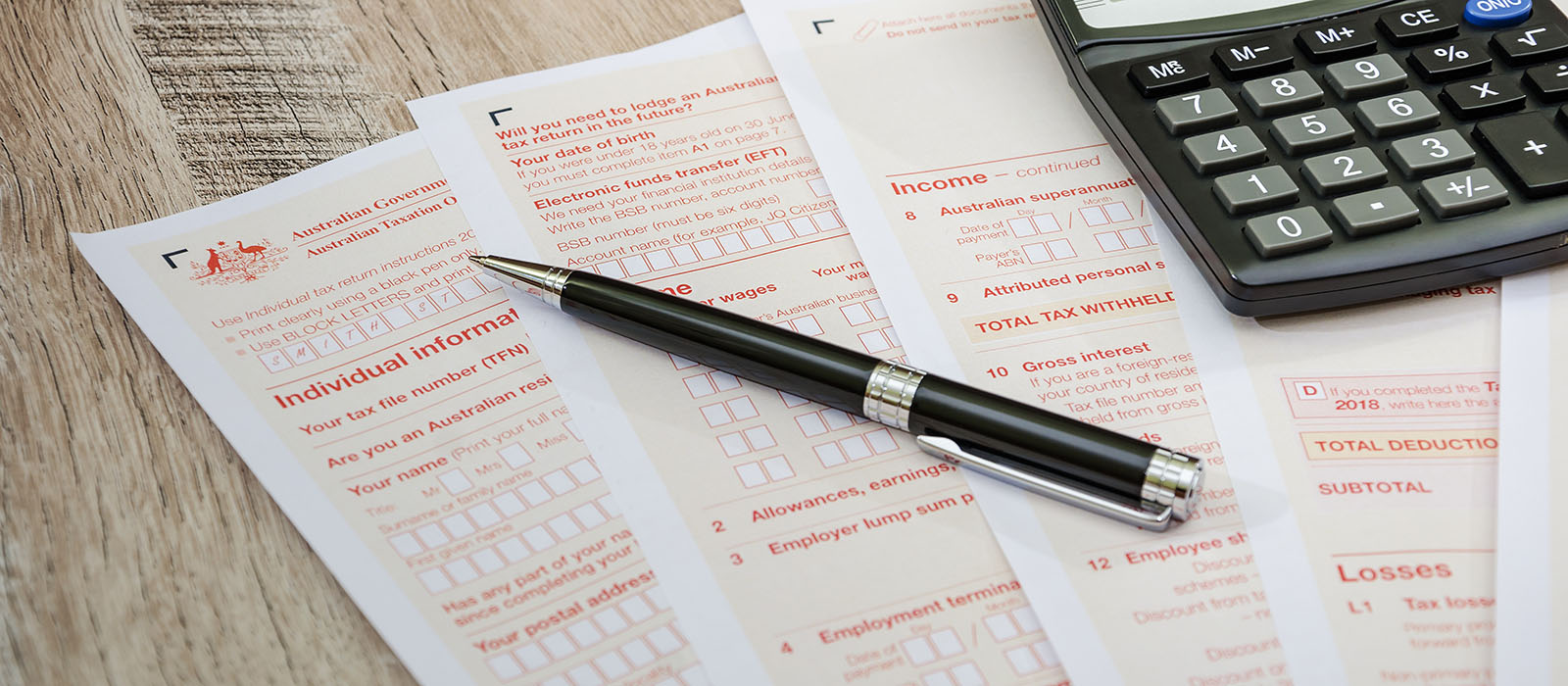To be fair, tax isn’t something you’ll think about until you start working, and start paying tax yourself. The average Australian worker will earn millions of dollars throughout their working life. They’ll also pay hundreds of thousands of dollars in tax (crazy huh?).
So, whether you want to start a casual or part-time job soon, or start up your own business at some stage, it’s never too early to learn about tax. In this article, we’ll take you through the basics (aka Tax 101). Let’s start with the first step, what a Tax File Number (TFN) is, and then how you can get one for yourself.
Of course, you can choose NOT to have a TFN. But guess what – you’ll end up paying more tax, and you won’t be able to apply for any government benefits.

Your Tax File Number explained
A Tax File Number (TFN) is your personal reference number used in Australia’s tax system (and it remains yours for life). If you’re a student, there are a few key reasons why you’ll need one:
- starting your first casual job
- beginning an apprenticeship or traineeship
- enrolling in a university or TAFE course
Having a TFN helps make sure you’re taxed correctly. It can also help you to access government benefits like HECS-HELP for study. Of course, you can choose NOT to have a TFN. But guess what – you’ll end up paying more tax, and you won’t be able to apply for any government benefits.
When you’d use a TFN
The main reasons include:
- whenever you start a job
- if you’re receiving or self-contributing to superannuation (i.e. money that’s put aside for when you retire)
- when you’re completing a tax return
- when you’re applying for any government benefits. For students this can include the following:
- Higher Education Loan Program (HELP)
- Student Start-up Loan (SSL)
- TradeSupport Loan (TSL)
- VET Student Loan (VSL)
- Student Financial Supplement Scheme (SFSS) debt.
How to get a TFN
Applying for a TFN is simple, secure, and free.
Your TFN is an important part of your identity for tax and superannuation purposes, so it’s essential to keep it safe and private.
You can apply online through the official Australian Taxation Office (ATO) website. Visit the ATO website.
Other places you can apply include:

What is Income Tax and why do you pay it?
Put simply, Income Tax is money that comes out of your wage and goes to the government. Whether you’re working casually, part-time or fulltime, you’re required to pay Income Tax.
It’s used to pay for all sorts of essential public services and community projects. This includes social security, disability services, healthcare, education, defence, roads (and more). Once you start a job, it’s a legal requirement to contribute a portion of your income to the government in the form of Income Tax (you may not like it, but we all need to contribute).
No one likes paying tax but it’s used to pay for all sorts of essential public services and community projects that makes life a whole lot better.
What are tax rates?
Australia uses a progressive tax system, which means the more you earn, the more tax you’ll pay. This system is designed to be fair. So, people earning more contribute more to fund essential government services.
The amount of tax you’ll pay depends on your income bracket. Tax rates range from 0% for low-income earners right up to 45% for the highest earners. There are also several rates in-between. Having different levels of tax ensures that your tax contributions increase with income.
If you don’t earn a lot, then you won’t pay a lot. As a matter of fact, in 2025-2026, you can earn up to $18,200 in one year, and you won’t pay a single cent in tax (it’s called the ‘tax-free’ threshold).

Some common types of tax
There are a few common types of tax you might come across. One is Income Tax, which we’ve already talked about. Another is the Goods and Services Tax, often called the GST. This is a federal tax, meaning it’s set by the Australian Government and is applied the same way across the country.
Then there are state and territory taxes, which can vary depending on where you live. Two common ones that you may pay are:
- Goods and Services Tax: is a tax added to the price of most things people buy, and the money goes to the government to help pay for public services.
- Stamp Duty: is a tax you’ll pay when you buy certain things, like property or cars. It’s usually a percentage of the purchase price (in the case of a car, it’s sometimes referred to as a duty or transfer fee).
Maybe you’re hearing some of these terms for the first time – and it’s hard to get your head around (that’s okay). Let’s try and break them down so they’re easier to understand.
Goods and Service Tax (GST)
GST is a 10% tax added to most goods and services sold or consumed in Australia. It’s another way the government raises revenue to fund essential services like healthcare, education, and infrastructure.
If you’ve got a great business idea and decide to launch your own venture, you’ll need to register for GST once your annual turnover reaches $75,000 or more. This means you’ll be responsible for adding GST to your price which you’ll collect from your customers. Then, every three months you’ll report it to the Australian Taxation Office (ATO) in the form of a Business Activity Statement (BAS). While it might sound a bit daunting at first, there are plenty of tools and support available to help you understand GST.
Stamp Duty
Stamp Duty is a tax that’s applied by state and territory governments when you buy a car, home, land or investment property. Often, it can add tens of thousands of dollars to the cost of a home. There’s good news though; if you’re buying a home for the first time, then you may not have to pay any stamp duty at all. To find out more, visit the State Revenue Office of Tasmania at www.sro.tas.gov.au/first-home-owner.
Fun Fact: Stamp duty got its name from the days when official documents were literally rubber-stamped to show that the property tax had been paid.

What’s a tax return
A tax return is a form you’ll submit to the Australian Taxation Office (ATO) each year. It will detail your income, deductions, tax paid, and other relevant financial information. There’s lots of information to fill out (and if you make stuff up you can be fined). In recent years, the Government has made the process easier through digital tools and support services.
Many Australians now lodge their tax returns online via myGov, which is linked to the ATO. This platform automatically pre-fills much of your information. This includes income statements, government payments, and private health insurance details. This reduces the chance of errors and saves time.
If your tax is straightforward, you can complete your return in just a few steps. For more complicated tax returns, a registered tax agent will complete the paperwork (on your behalf) for a fee, which is also tax-deductible. We’re talking about that next.
Note: You must keep records (receipts, invoices) to claim deductions and these expenses must be directly related to earning your income.
Tax deductions
A tax deduction is an expense that you can subtract from your total income to reduce the amount that is subject to tax. In other words, it lowers your taxable income, which can result in paying less tax.
There are many tax-deductible items that can reduce your overall tax bill. This includes:
- work-related expenses such as uniforms, protective clothing and tools
- work-related travel costs
- charitable donations
- self-education expenses like course fees and stationery.
You may be entitled to a tax refund
If you’ve paid the right amount of tax already when you submit your tax return, that’s great. You’ll have no more tax to pay. But depending on your deductions, and how much you’ve already paid in tax for the year, you may be entitled to a tax refund. In other words, the government will give you some money back. In fact, sometimes it’s quite a lot of money (we knew you’d like that!).
How to lodge your tax return.
It’s pretty easy. You can lodge your tax return online via myGov, using a registered tax agent, or you can use the ATO’s Tax Help Program. By the way, if you’re expecting a refund, the sooner you lodge your tax return, the sooner you’ll get your refund.
Knowing about taxation is an important life skill
This is just a snapshot of the various taxes you’ll be legally required to pay once you enter the workforce. Just remember, the tax you’ll pay can add up to hundreds of thousands of dollars over the course of your working life. That’s why understanding tax is a life-skill that can set you up for a strong financial future.
Key takeaway
The sooner you start learning about tax, the better off you’ll be.

